Putting in place a coherent and feasible career progression plan is a great way to boost employee motivation and keep their professional goals aligned with the company.
This guide will help you to structure a plan to help drive employee training and development in the right direction, developing new skills and experiences that deliver the best outcomes for your business.
What is career progression?
Career progression is often simplistically reduced to pay rises and promotions within a given team or department. But when done right, career progression offers employees far more than just additional income.
It is intrinsically linked to their professional development, encouraging growth through the acquisition of new skills and experiences.
Businesses that understand this build the employee experience around goals and aspirations that offer a fulfilling journey within the company.
They encourage employees to take on new challenges as they progress in their career, offering regular development opportunities with practical tips and training courses to develop new skills.
This article will explore the importance of career progression, and how you can encourage the professional development of employees with an effective career progression plan.

How important is career progression?
Implementing career progression plans for employees at your business can offer a range of important advantages.
Employees who can see a clear path for accomplishing career goals feel a greater sense of job satisfaction and confidence. They will also be more willing to seek out development opportunities and build upon their talent stack.
A report from McKinsey outlines the significant role a sense of purpose plays in the performance and resilience of employees. The report states:
“People who live their purpose at work are more productive than people who don’t. They are also healthier, more resilient, and more likely to stay at the company. Moreover, when employees feel that their purpose is aligned with the organization’s purpose, the benefits expand to include stronger employee engagement, heightened loyalty, and a greater willingness to recommend the company to others.”
When this sense of purpose is closely aligned to individual career prospects, these benefits are strengthened and enhanced.
Overall levels of work performance and motivation will also increase when employees recognise that their leaders are committed to helping them with their professional development.
Why should you create a career progression plan?
Creating a career progression plan brings a number of benefits to the table. Here are some of the main advantages you can expect when helping employees with their professional development.
Motivated employees
Career development and motivation go hand-in-hand. When employees are focused on a series of professional goals, their work is enhanced with a greater sense of purpose. This gives them the tools to overcome setbacks and rise to any new challenges presented in their role.
When combined with the positive impact of performance management on employee motivation, career goals help them to develop new competencies and develop their talents.
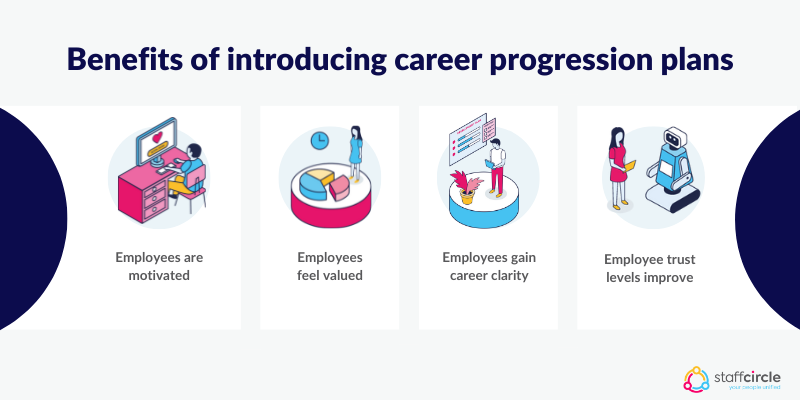
Employees will feel valued
Employees who communicate regularly with managers about their professional goals are more likely to feel valued. This is especially the case when the individual’s values are aligned with those of the company.
The article from Forbes, Why Your Work Values Are Essential to Career Satisfaction, outlines several core values that companies can help foster in the workplace:
- Being creative
- Having variety
- Feeling respected
- Learning new things
- Experiencing challenging work
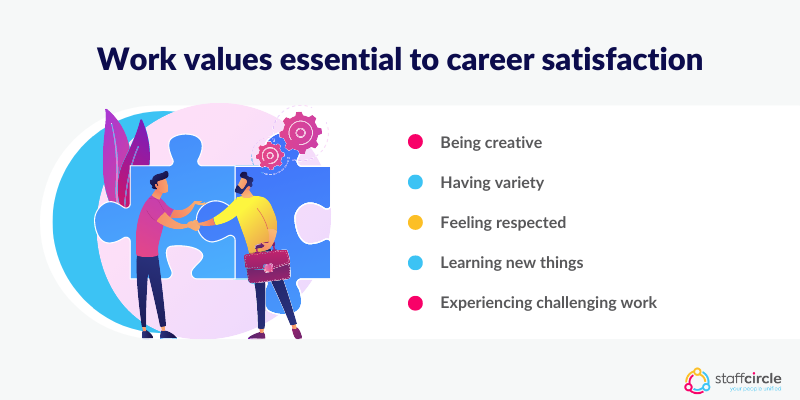
These values all play an important role in fostering career development and encouraging employees to transform their skills and become star players.
Employees can gain career clarity
When employees lack a clear sense of direction, they may feel as if their career prospects are stagnating. With the feeling they are stuck in a dead-end job, their productivity can decline, along with their motivation and engagement.
A clear and concise career progression plan sets out a roadmap for success that employees can embrace.
By bringing clarity to their role and responsibilities, employers can offer the necessary structure to embolden employees to work towards promotions and embrace new opportunities.
It will help build trust
Successful business leaders understand the importance of building trust in the workplace and how encouraging career growth lies at the heart of this process.
This creates opportunities for managers to build healthy relationships with their staff, collaborating with them on issues relating to their training and development.
Career goals are more likely to be achieved when these connections are encouraged, aligning expectations and driving shared outcomes.
How to create a career progression plan in 6 steps
Here’s how you can create a career progression plan for your employees in 6 easy-to-follow steps:
1. Start with an organisational chart
Before you can successfully align an employee’s professional development with the company’s objectives, you need a clear understanding of how skills and competencies are distributed. By using a department organisational chart, roles and hierarchies can be clearly outlined.
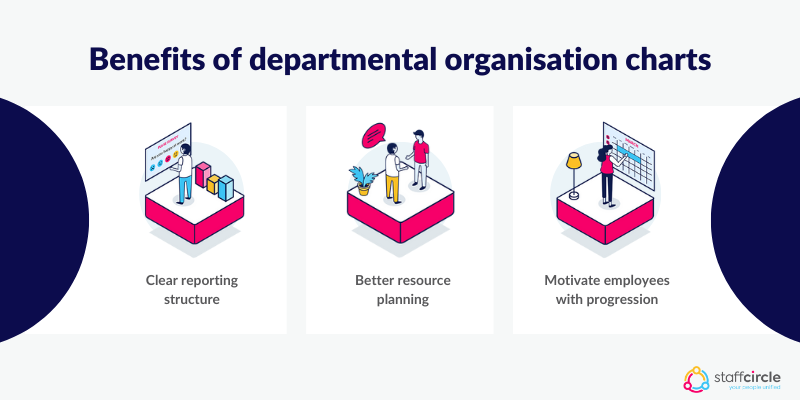
Structural gaps and other pain points can then be identified so that employee career progress and training can be designed to satisfy these areas for improvement.
2. Evaluate current employees and their positions
Next, a clear evaluation of current employees and their positions is needed, tied into the organisational chart.
Business leaders can use engagement surveys and 360-degree feedback tools to gather relevant feedback to determine who is performing well and in what areas of expertise. This helps to clearly define the company’s collective skill stack.
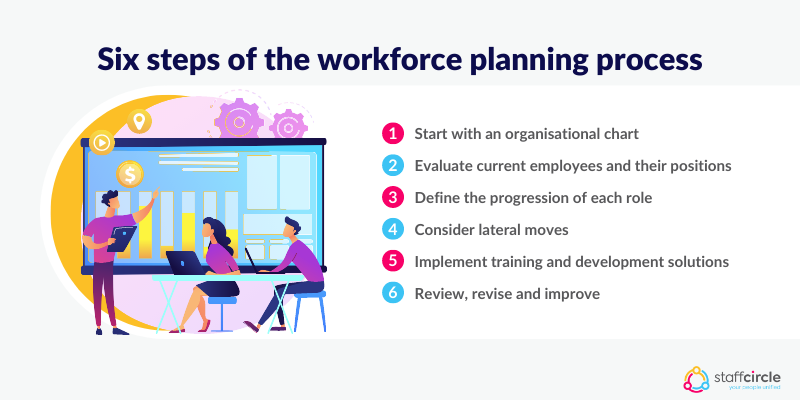
3. Define the progression of each role
Each individual is at a different stage in their career progression, with their own unique skills and competencies. Understanding where they are on their career journey begins when a new hire starts their first day at the company.
An effective way to establish goals and monitor progress is through the use of personal development plans. These plans can be regularly updated to reflect new skills and drive future professional development.
4. Consider lateral moves
While many employees view career progression in terms of adopting more responsibilities, not everyone wishes to become a team leader or manager. As new skills are learned, it may be the case that lateral promotions are more appropriate, switching teams and departments instead of moving up through the hierarchy.
HR leaders and managers can better assess potential lateral promotions through the use of regular skills audits, which can help determine which employees might be a better fit in a different role.
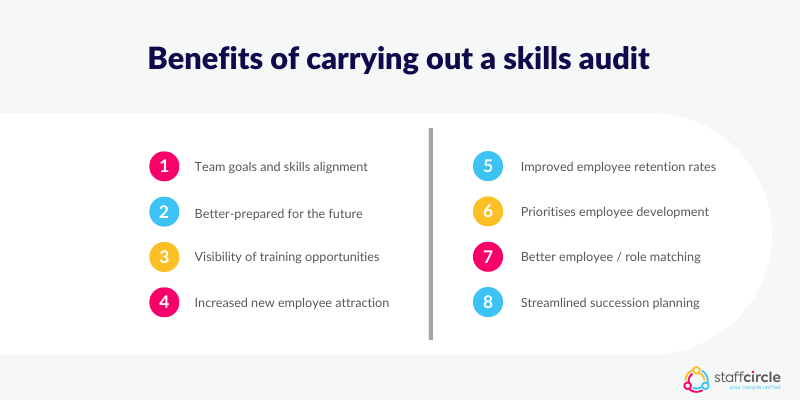
5. Implement training and development solutions
Whichever path has been chosen as part of someone’s career progression, training and development are essential.
This can include everything from managerial courses and shadowing superiors to general coaching and mentoring with peers and colleagues.
As training and development can be costly and time-consuming, understanding how this can be most effectively maximised for career development ensures these valuable resources are allocated where they need to be.
6. Review, revise and improve
Finally, career progression rarely has a fixed journey or end goal. As employees develop in their roles, new opportunities may arise that weren’t established in their personal development plans.
The ability to identify these changing priorities requires continuous feedback and communication between employees and their direct reports. This can be achieved with regular one2one meetings, as well as through discussions during their monthly and quarterly reviews to make sure they are on the right track.
In Summary
An effective career progression plan is an invaluable tool for creating a strong sense of purpose among employees. By following the six simple steps outlined in this article, staff can work towards accomplishing their professional goals in alignment with the core objectives of the organisation.





